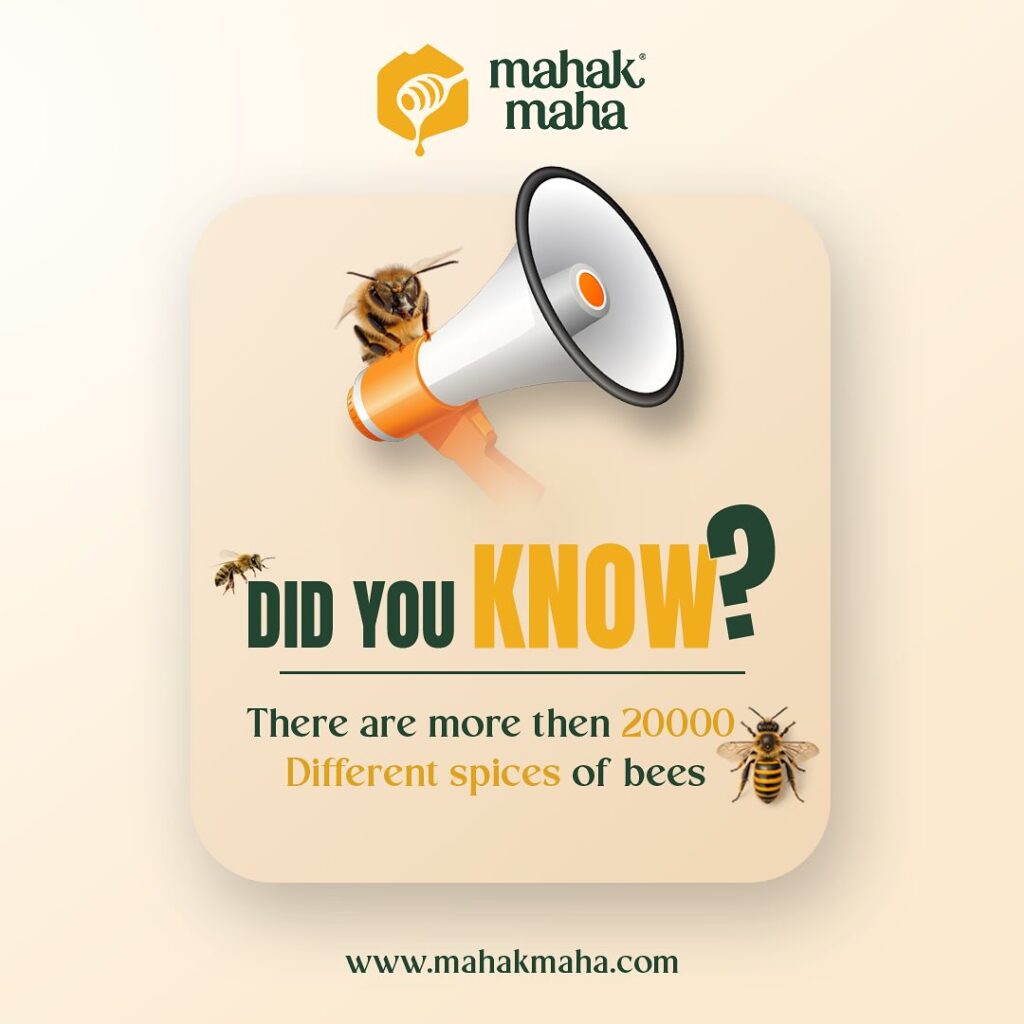- Admin_mahakmaha
- 0 Comments
Bees are among the most diverse and essential insects on our planet. Globally, scientists have identified over 20,000 species of bees, and this number may reach 30,000 when including undescribed species. Bees are classified into seven major families, with the Apidae family being the largest. This group includes well-known bees such as honeybees, bumblebees, and stingless bees. Despite the popularity of honey-producing species, the majority of bees are solitary, meaning they do not form hives or produce honey. These solitary bees still play a vital ecological role as pollinators, helping plants reproduce and maintaining healthy ecosystems.
The Role of Bees in Pollination
Bees are incredibly important for agriculture and biodiversity. They are responsible for pollinating around 70% of the world’s crop species, which includes fruits, vegetables, nuts, and coffee. Without bees, food production would decline drastically, affecting both human diets and wildlife that depend on plants. While honeybees often receive most of the attention, wild and solitary bees contribute significantly to pollination in both natural and agricultural environments.
Bee Diversity in Nepal
Nepal, with its rich biodiversity and varied geography, is home to five major species of honeybees. These bees are uniquely adapted to different ecological zones—from the lowland Terai to the high Himalayas. Each species plays a different role in the environment and local livelihoods, either through traditional honey hunting or modern beekeeping.
1. Apis cerana – The Asian Honey Bee
Apis cerana is a native species found throughout the hills and mountains of Nepal. It is well adapted to local climatic conditions and is commonly kept in traditional fixed-comb hives, often made from logs or mud. These bees are resistant to many local pests and diseases and are suitable for subsistence-level beekeeping practiced by rural households. Although their honey yield is lower compared to commercial species, they require less management and are well suited for small-scale honey production.
2. Apis mellifera – The European Honey Bee
Apis mellifera is an introduced species that has become popular in the Terai region for commercial beekeeping. This species is typically kept in Langstroth hives and is known for producing large quantities of honey. However, Apis mellifera is more sensitive to local pests, diseases, and environmental changes. Despite this, it remains the most commonly used bee in modern apiculture in Nepal due to its high productivity and commercial value.
3. Apis florea – The Dwarf Honey Bee
Known locally as “Katheuri Mauri,” Apis florea is a small, wild bee that builds open, exposed nests on tree branches, under roofs, or even on fences. This species is not suitable for domestication and is not used in beekeeping, but it plays an important role in natural pollination. Though the honey yield is minimal, it is sometimes harvested from the wild in small quantities.
4. Apis dorsata – The Giant Honey Bee
Apis dorsata is a large wild species found in forests and rural areas. It builds large, open nests on tall trees or steep cliffs. These bees are aggressive and cannot be domesticated. Their honey is harvested by local people through traditional honey hunting practices, which are passed down through generations. The honey from Apis dorsata is highly valued for its medicinal properties and rich flavor.
5. Apis laboriosa – The Himalayan Giant Honey Bee
The most remarkable among Nepal’s bee species is Apis laboriosa, the world’s largest honey bee. It is found only in the high Himalayan regions, typically nesting on vertical cliffs at altitudes above 2,500 meters. Harvesting honey from these bees is a dangerous and sacred tradition, especially among the Gurung community, who use hand-made ladders and ropes to collect honey from these inaccessible nests. The practice is not only physically demanding but also carries deep spiritual and cultural significance.
Traditional Honey Hunting in Nepal
In many remote regions of Nepal, honey hunting remains an important cultural and economic activity. Unlike modern beekeeping, which uses hives and controlled environments, honey hunting involves harvesting honey directly from wild bee colonies, often in extreme and dangerous conditions. Communities in the Himalayan regions have practiced this tradition for centuries, especially with Apis dorsata and Apis laboriosa. While this method yields limited amounts of honey, it holds immense cultural value and traditional knowledge.
Beekeeping and Conservation
Nepal practices both traditional and modern beekeeping, utilizing native and introduced bee species. However, with the increasing use of pesticides, habitat loss, and climate change, bee populations are under threat. There is a growing need to promote bee conservation, support sustainable beekeeping, and preserve traditional knowledge. Bees not only provide honey and wax but are also essential to food security, biodiversity, and rural livelihoods.

Add Your Heading Text Here


